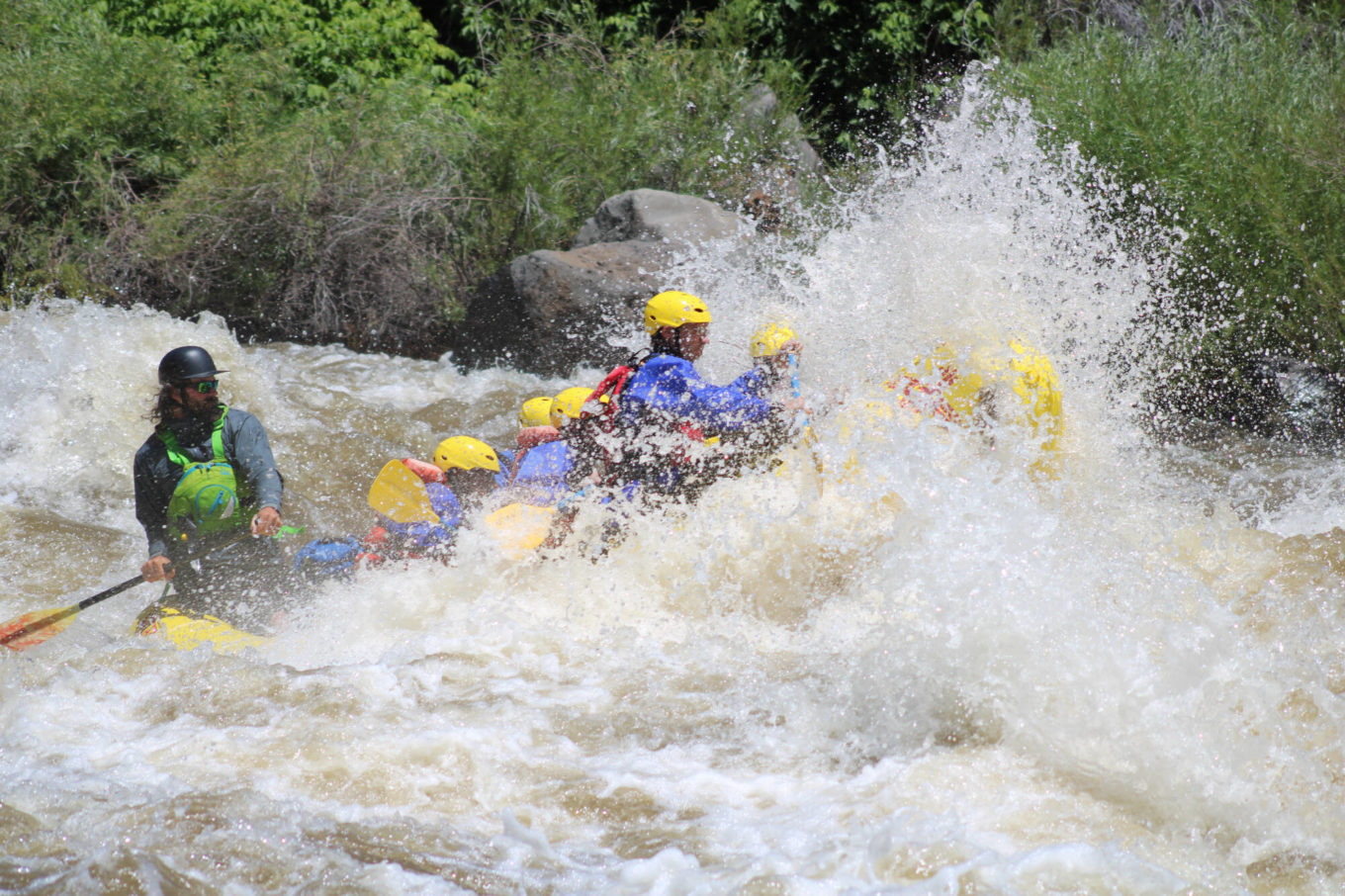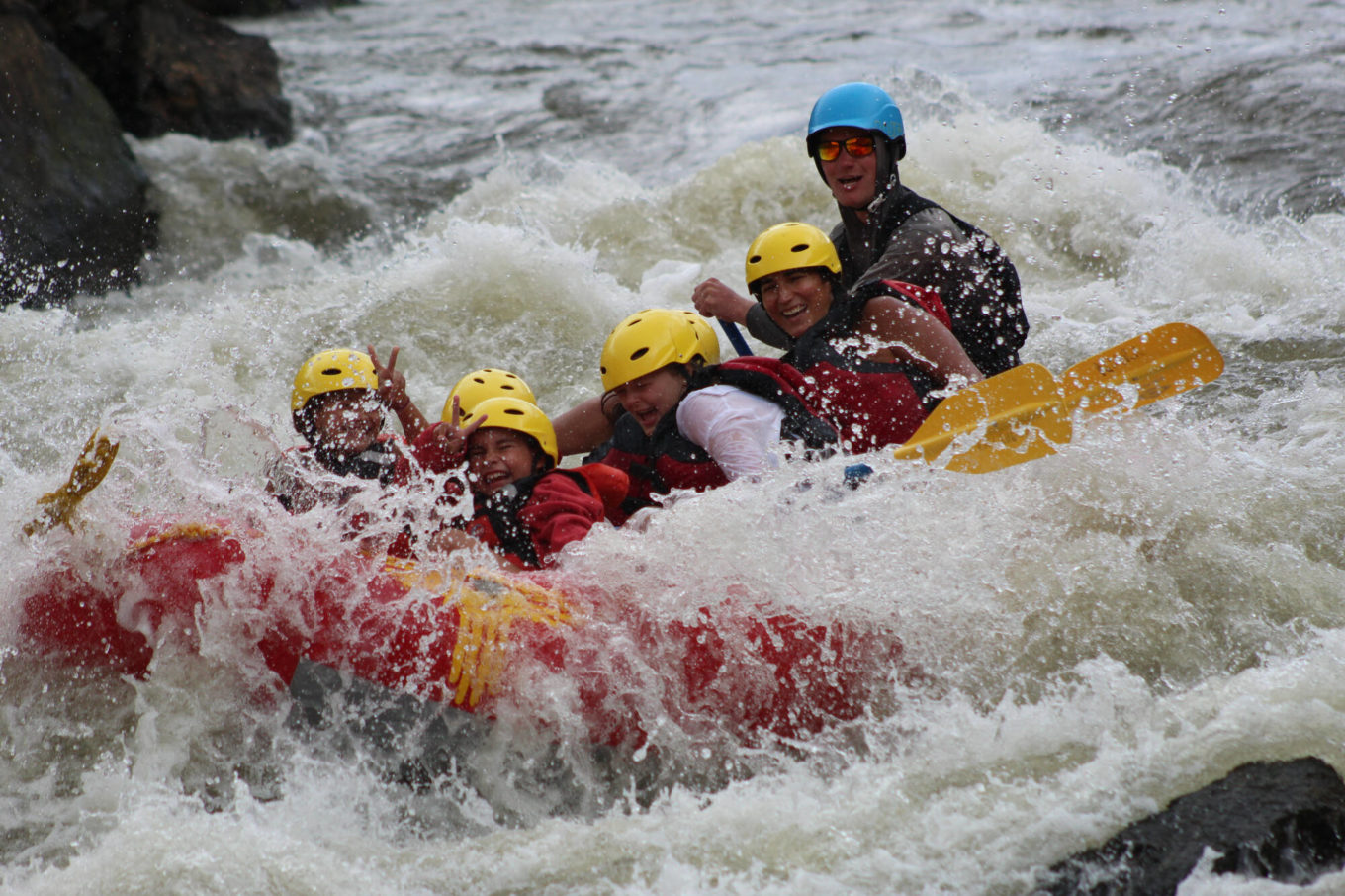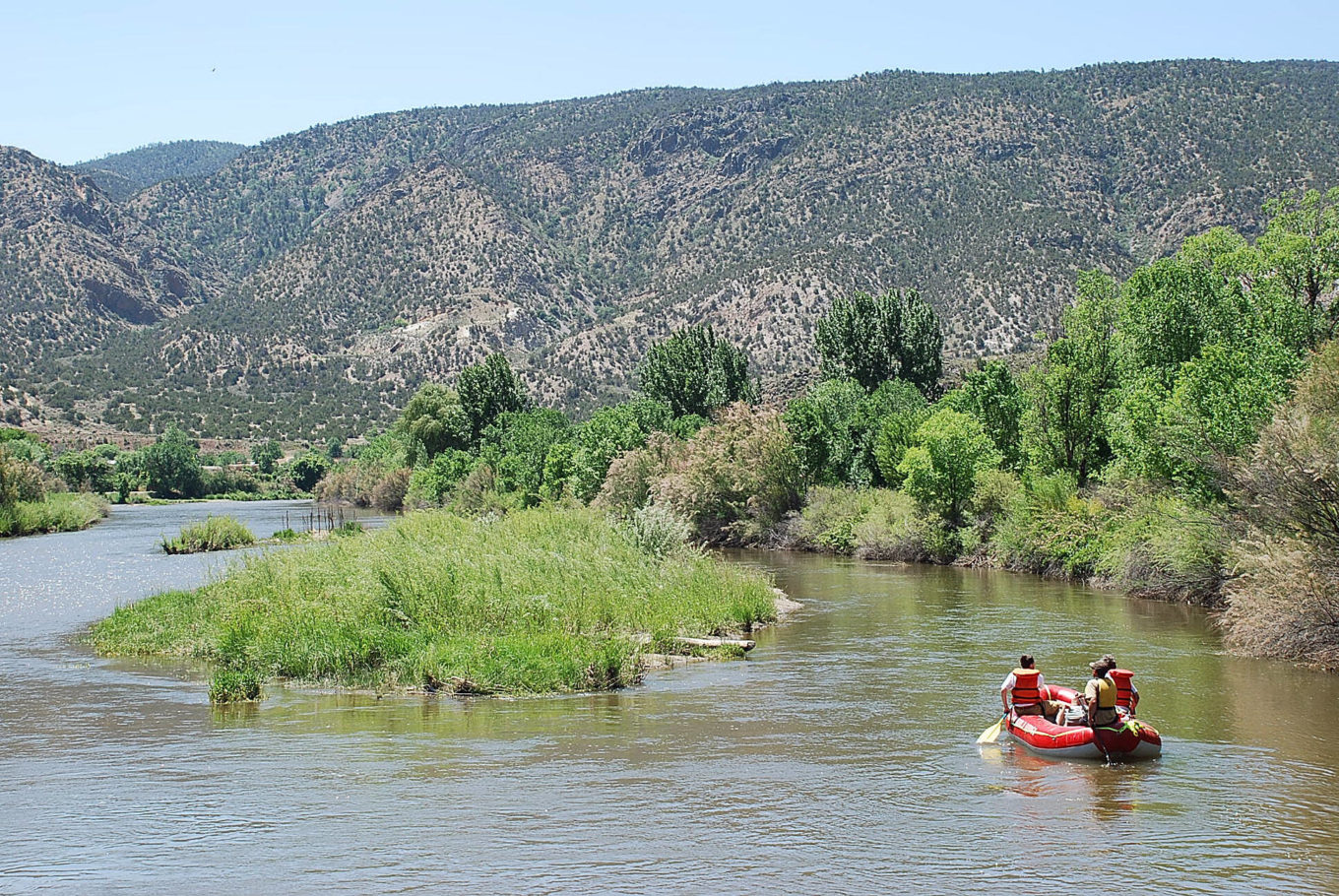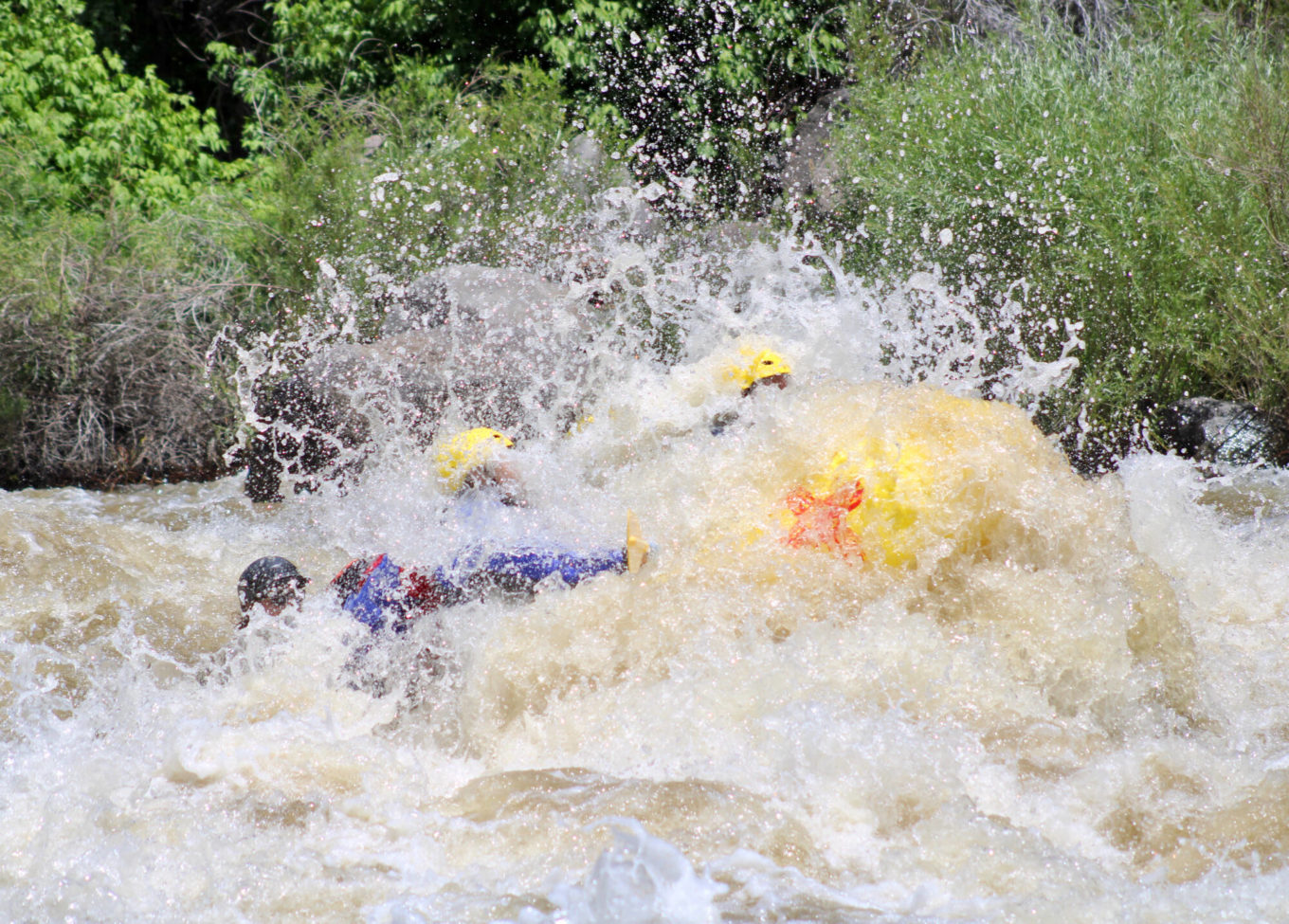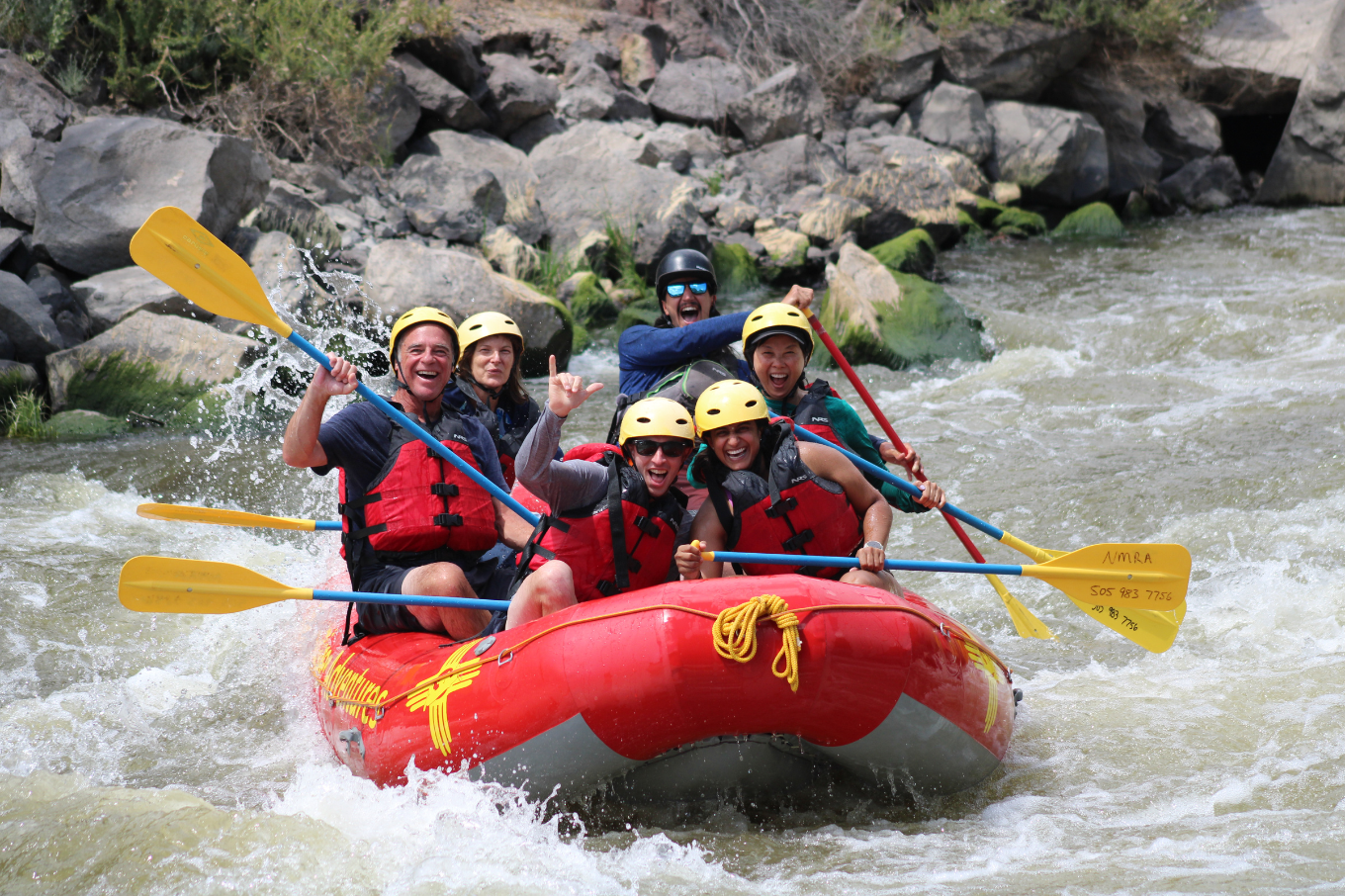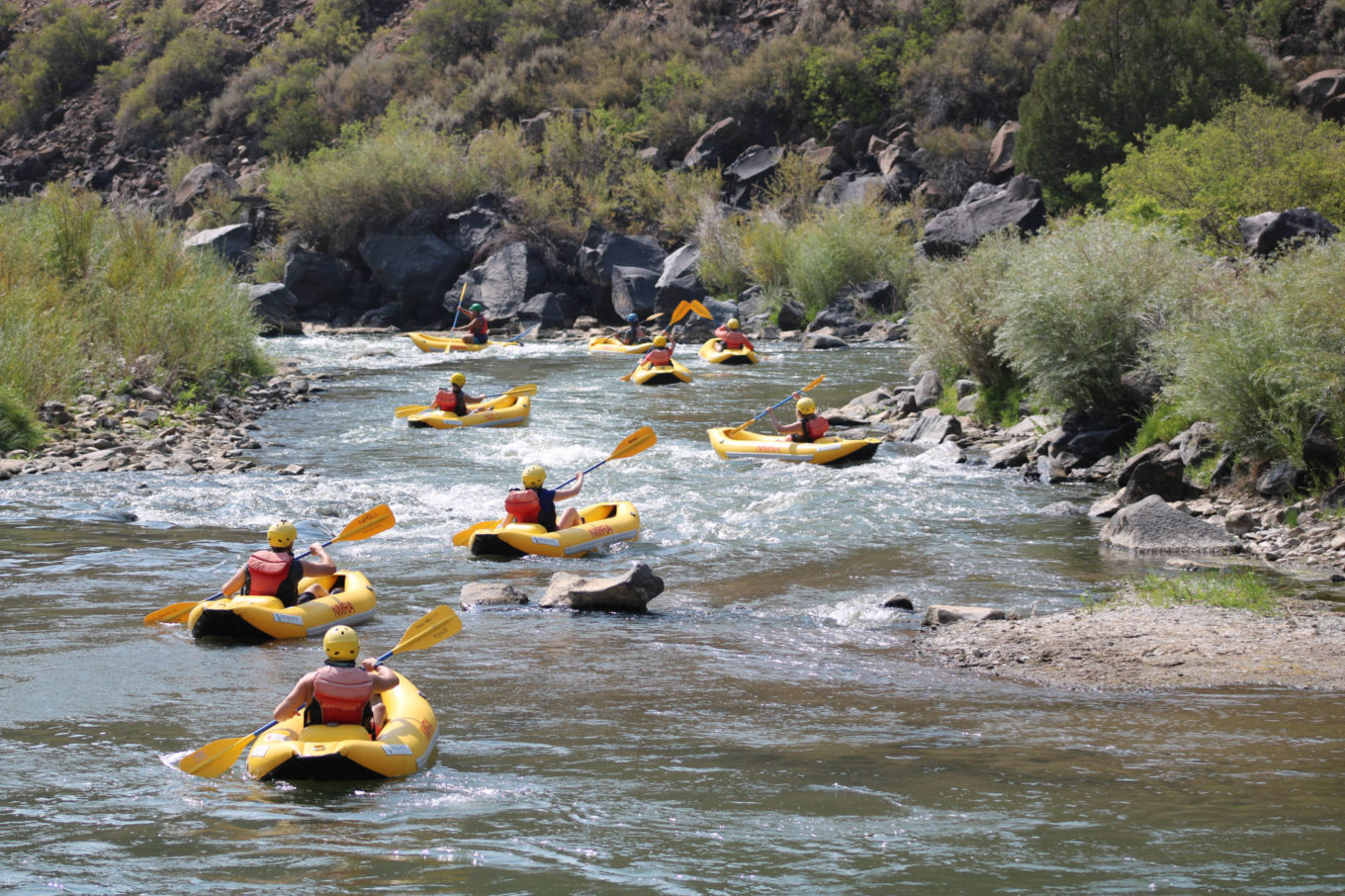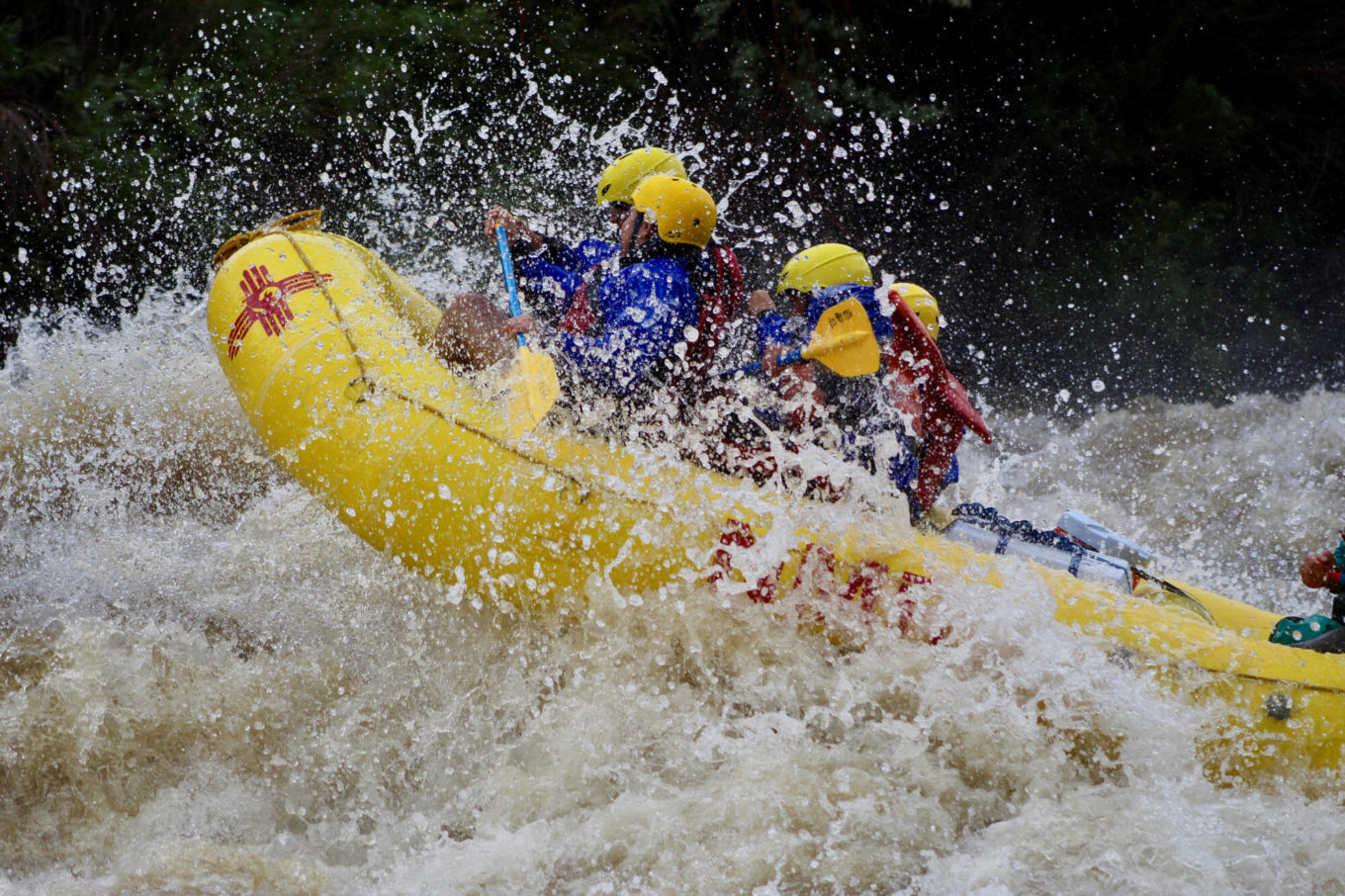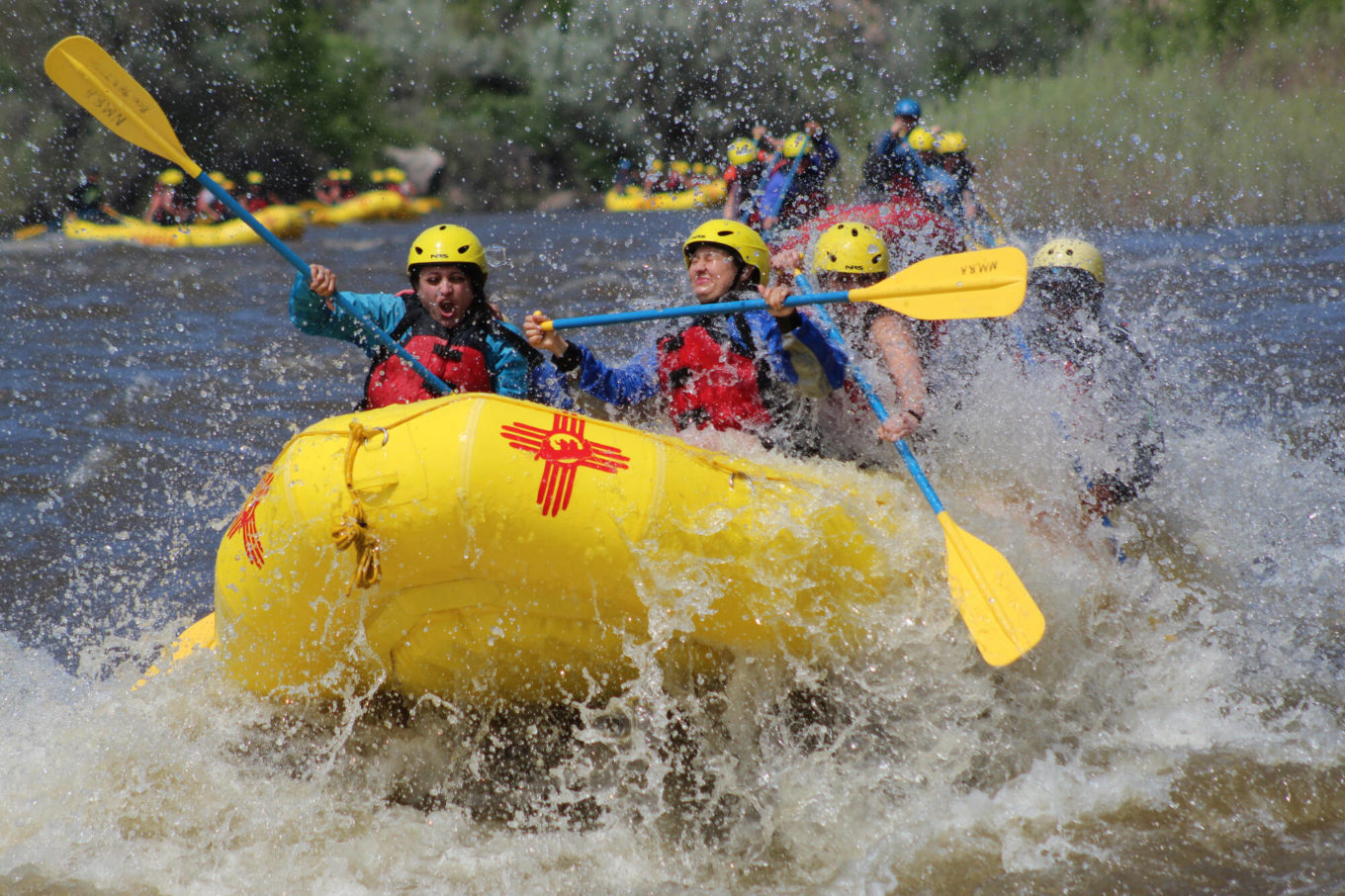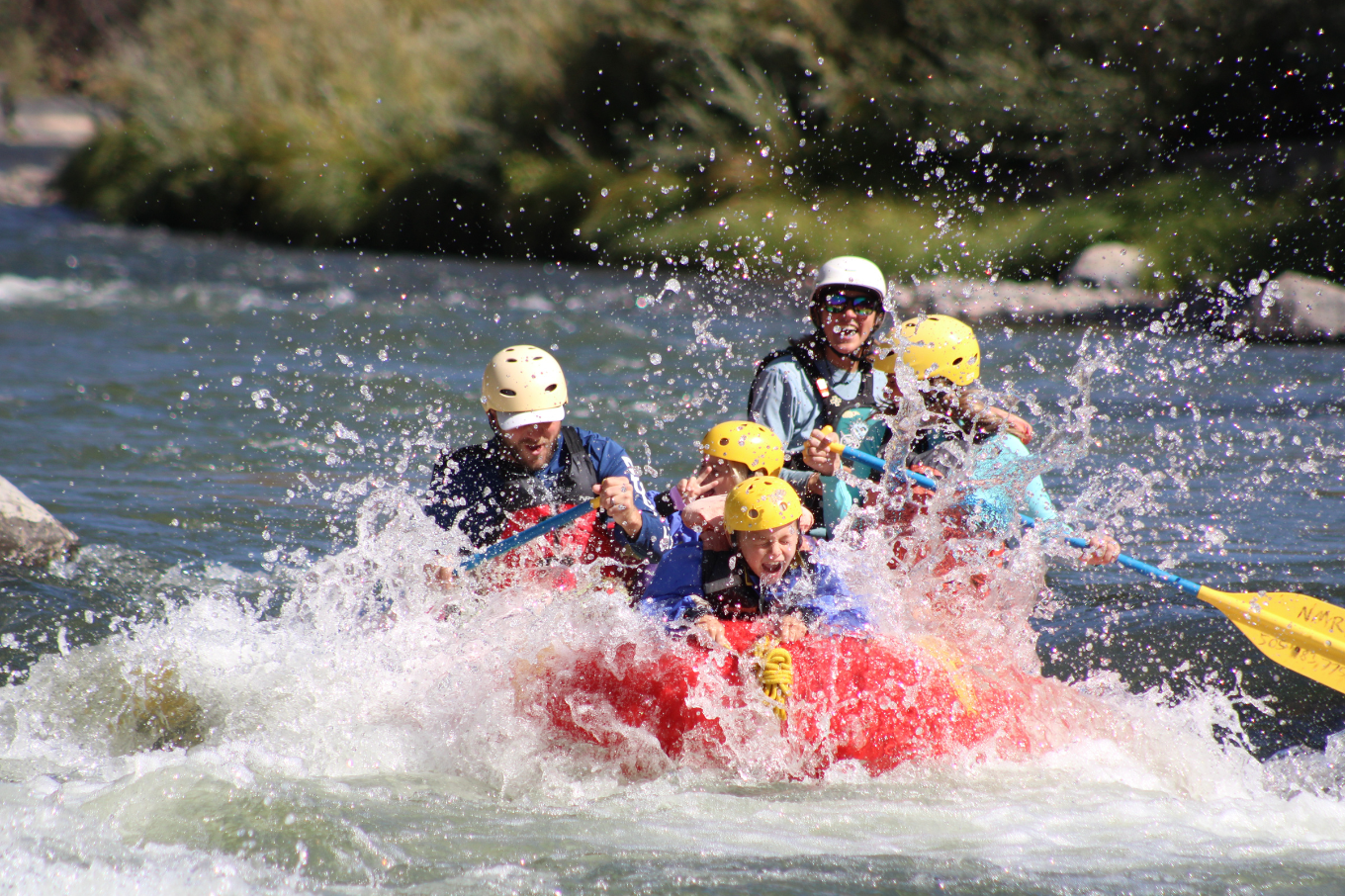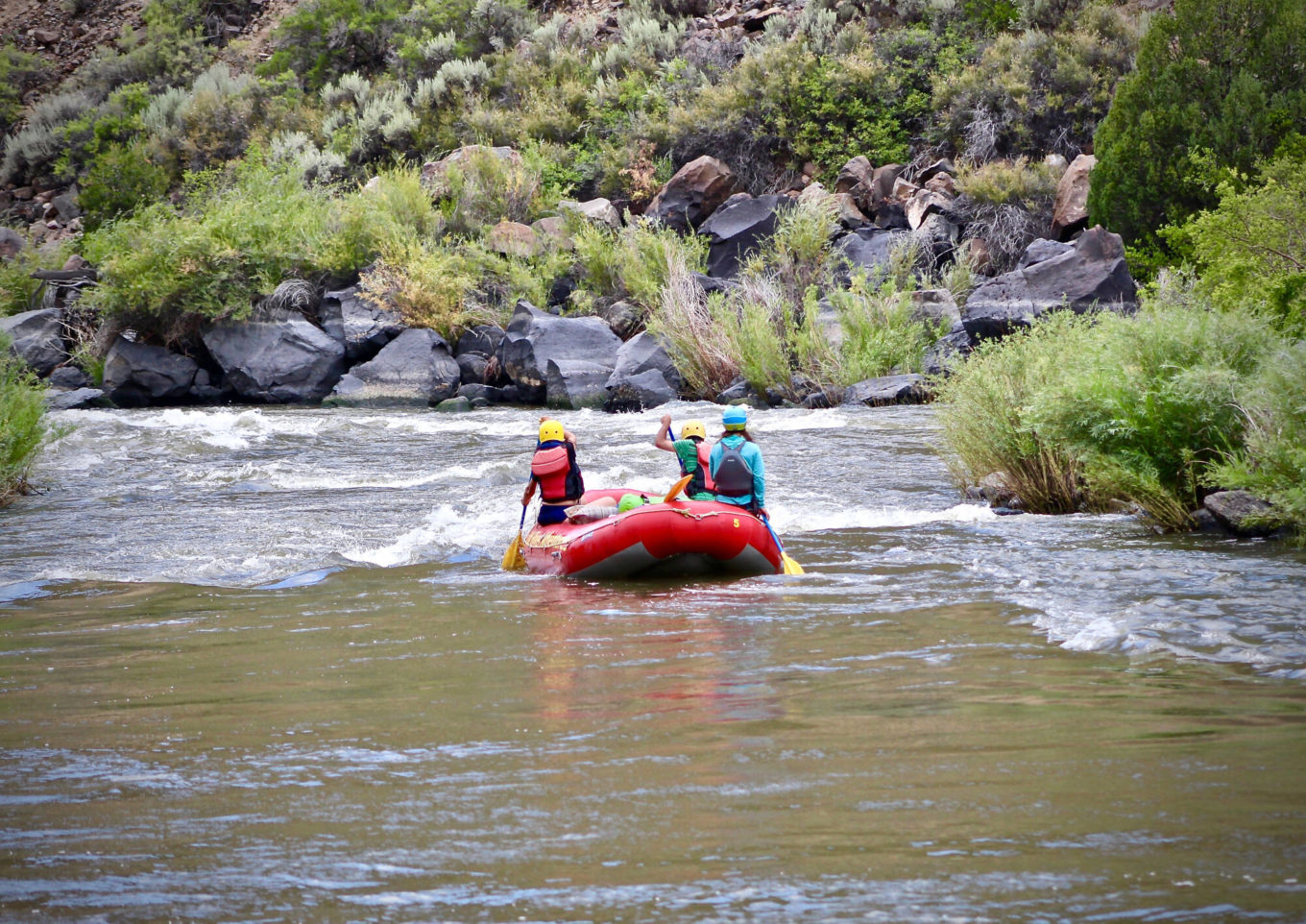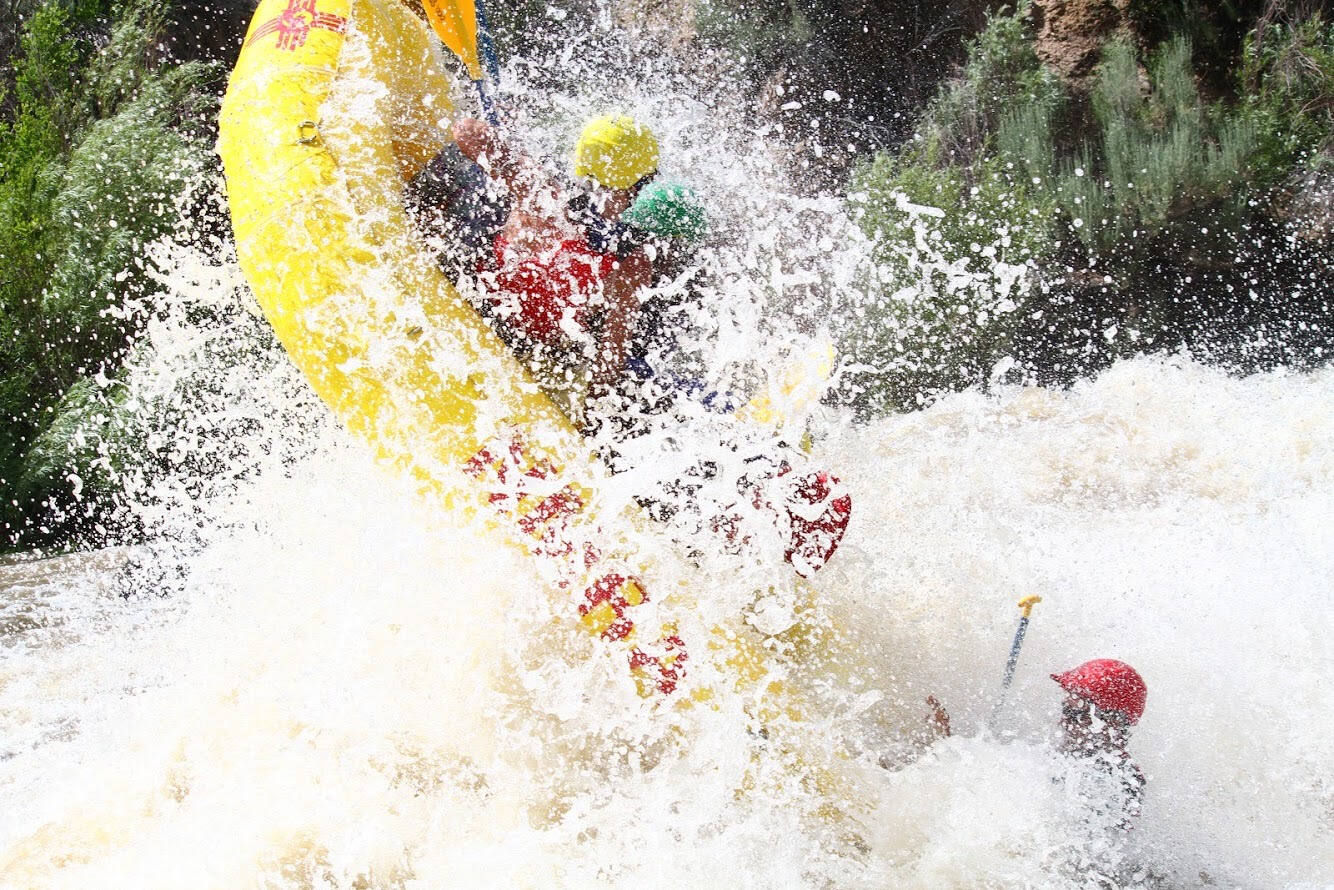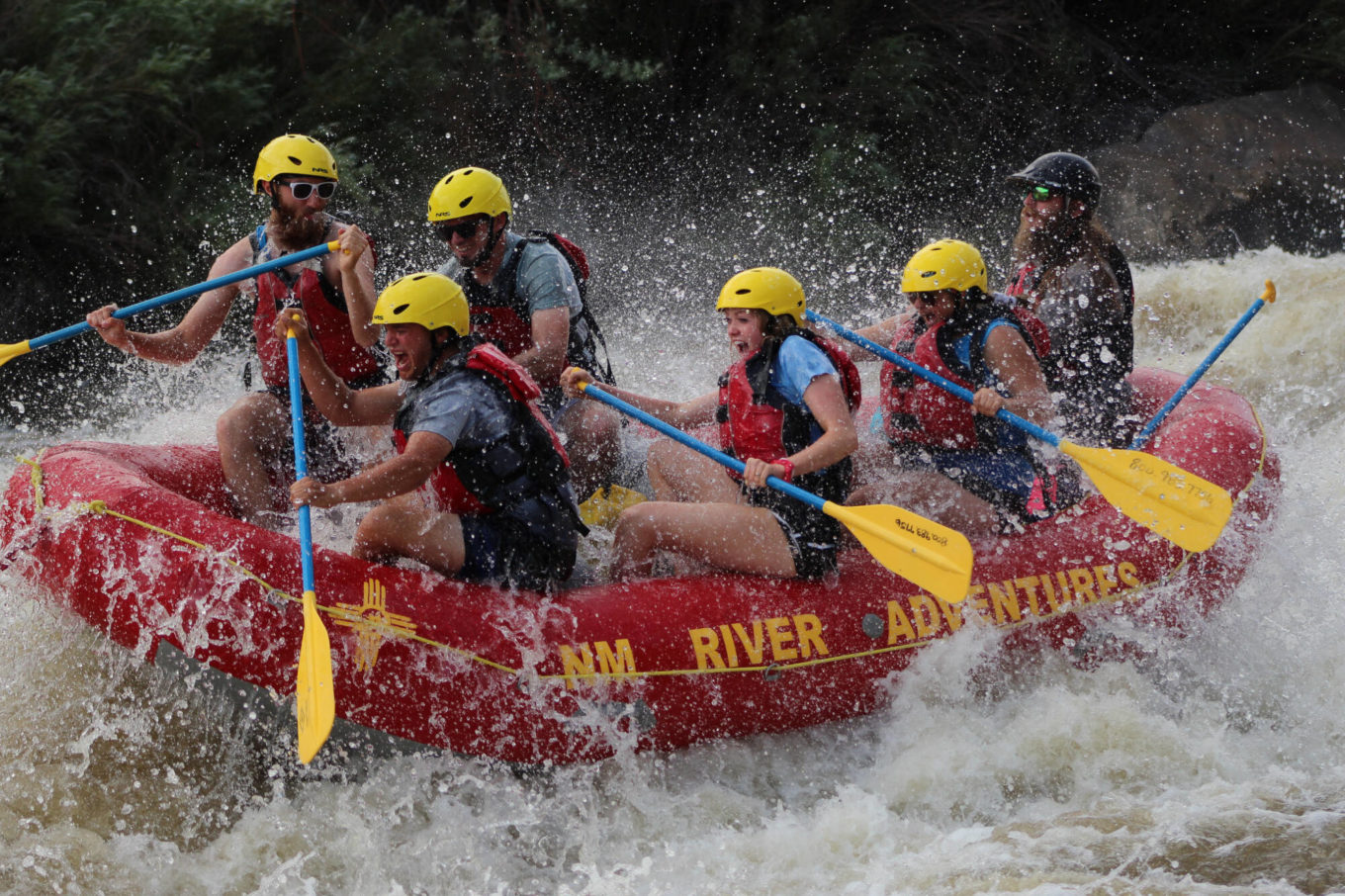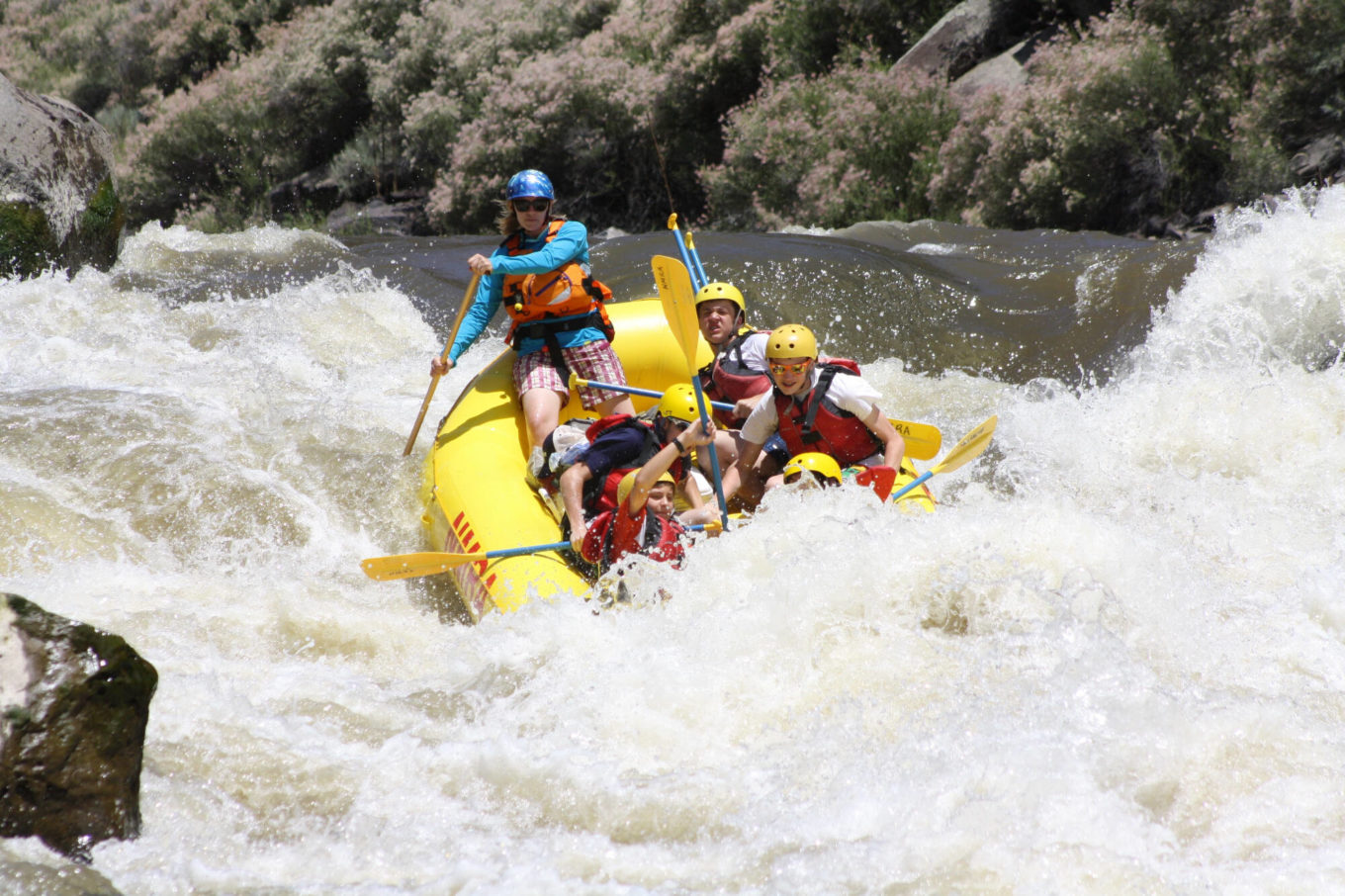
Rio Grande
5 Fun Facts About Our Favorite Rafting River
- The Rio Grande is 1,900 miles long and the fifth-longest river in North America
- The Rio Grande is a designated Wild & Scenic River System
- This river system flows into the Gulf of Mexico
- Historically, this river was named Rio del Norte before American settlers in Texas adopted “Rio Grande”
- A border between Texas and Mexico is formed by the Rio Grande
The Whole Enchilada
The Rio Grande River in the United States, known as the Río Bravo (or, more formally, the Río Bravo del Norte) in Mexico, is a river, 1,885 miles (3,034 km) long, and the fourth longest river system in the United States. The river has, since 1848, marked the boundary between Mexico and the United States Rio del Norte was the most common name for the upper Rio Grande (roughly, within the present-day borders of New Mexico) from Spanish colonial times to the end of the Mexican period in the mid-19th century. The use of the modern English name Rio Grande began with the early American settlers in south Texas. By the late 19th century, the name Rio Grande for the entire river, from Colorado to the sea, had become standard in the United States.
The Rio Grande River was designated as one of the American Heritage Rivers in 1997. The Rio Grande rises in the east Rio Grande National Forest in the U.S. state of Colorado. It is formed by the joining of several streams, just east of the continental divide. From there, it flows through the San Luis Valley, then south into New Mexico. Millions of years ago, theRio Grande ended at the bottom of the Rio Grande Rift in Lake Cabeza de Vaca. But about one million years ago the stream was “captured” and began to flow east. The geology that created the 1,800-mile long Rio Grande River, was a millions-of-years-ago rift, or crack, between the Sangre de Cristo Mountains and the ranges to the west. Volcanic activity filled the crack with lava. About 3 million years ago, water draining from the San Juan Mountains of Colorado began carving the river that dissects New Mexico and, eventually, the west and southwest boundary of Texas and the Texas-Mexico border, before emptying into the Gulf of Mexico.
The Rio Grande In New Mexico
The Rio Grande rises in high mountains and flows for much of its length at high elevation. The Rio Grande River in New Mexico flows through the Rio Grande Rift from one sediment-filled basin to another, cutting canyons between the basins and supporting a fragile bosque ecosystem in its floodplain. But before that runoff settles down to a placid river, it rumbles through far northern New Mexico. The Rio Grande flows out of the snowcapped Rocky Mountains in Colorado from its headwaters in the San Juan Mountains, and journeys 1,900 miles to the Gulf of Mexico. It passes through 800-foot chasms of the Rio Grande Gorge, a wild and remote area of northern New Mexico. In 1968, the Rio Grande and Red River were among the first eight rivers Congress designated into the National Wild and Scenic River System to protect outstanding resources values.
Rafting The Rio Grande
Class II to Class V rapids exist in nine different segments encompassing the Upper Rio Grande Gorge and Lower Rio Grande Gorge.
The first section that you can explore with NMRA starts at the state line with Colorado and is called the Ute Mountain section, rarely run and perfect for inflatable kayaking from June through Sept. Next in line is the Razorblades section which offers the most remote section of class 4 rafting on the Rio Grande. This section requires us to hike all of our equipment in and out of the gorge for one mile each way. Below is the only section of the river that is not runnable by rafts, the Upper Taos Box which shares it’s take-out with the put-in of the Middle Taos Box or La Junta section of the Rio Grande. This is one of our favorite sections to run in inflatable kayaks. Also, requiring a mile hike into the river with our equipment, paddlers are rewarded with a fun, beautiful and remote section of river wilderness. Next in line is the most iconic full day rafting trips in the country, the Taos Box! Look no further for the perfect combination of whitewater and wildlife all situated in a breathtaking and remote, sheer walled canyon. Our next section takes us through the latter part of the Rio Grande Del Norte National Monument. This is the Orilla Verde section and also the first half of the Rio Grande Gorge Full Day trip. At the end of the Orilla Verde run, the Rio Grande turns west dramatically as it reaches the Rinconada Fault, directing it through the most popular and rafted section of river in New Mexico, The Racecourse. Ranging from class 2-4 depending on the water levels and time of year, rafting the Racecourse is sure to deliver fun for the entire family. Finally, below the Racecourse, we have the Bosque section which offers beautiful class 2 floating and amazing fishing opportunities.
Let NMRA pair you with the best section for your group and join us for a Rio Grande rafting adventure this summer!
24 Hours On The Rio Grande, White Water Rafting
$62 Child
Middle Taos Box Inflatable Kayaking Trip
Rio Grande Racecourse Half Day
$62 Child
Rio Grande Gorge Rafting Full Day
$105 Child
The Rio Grande Valley

Gallery

